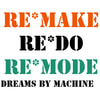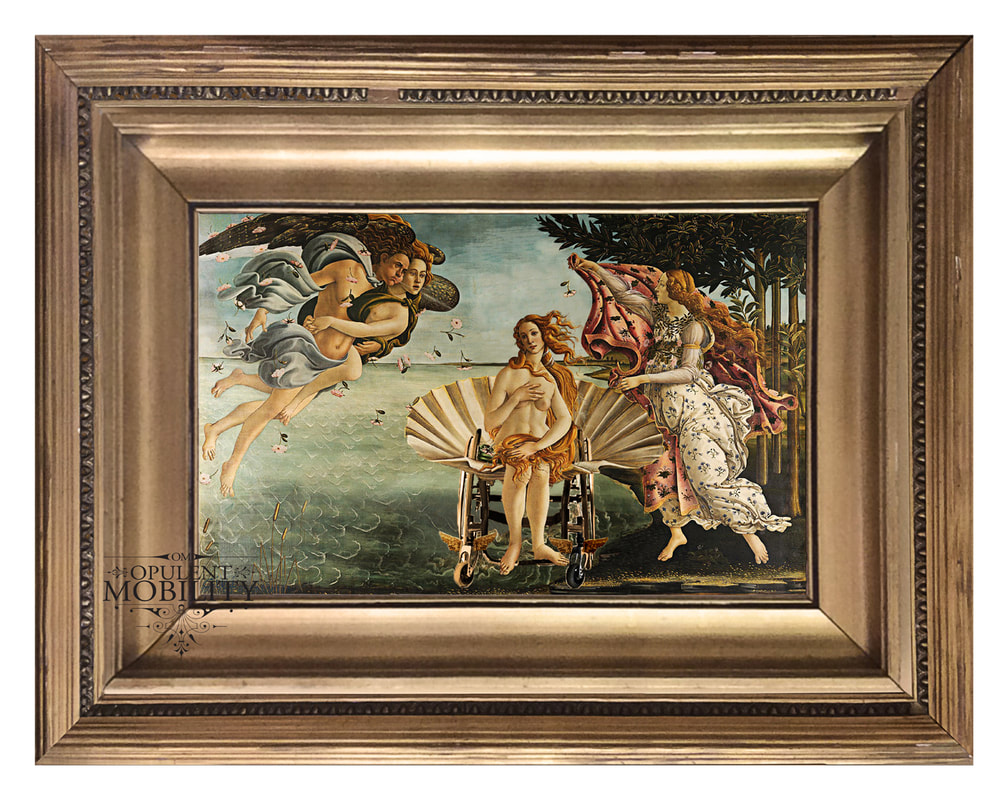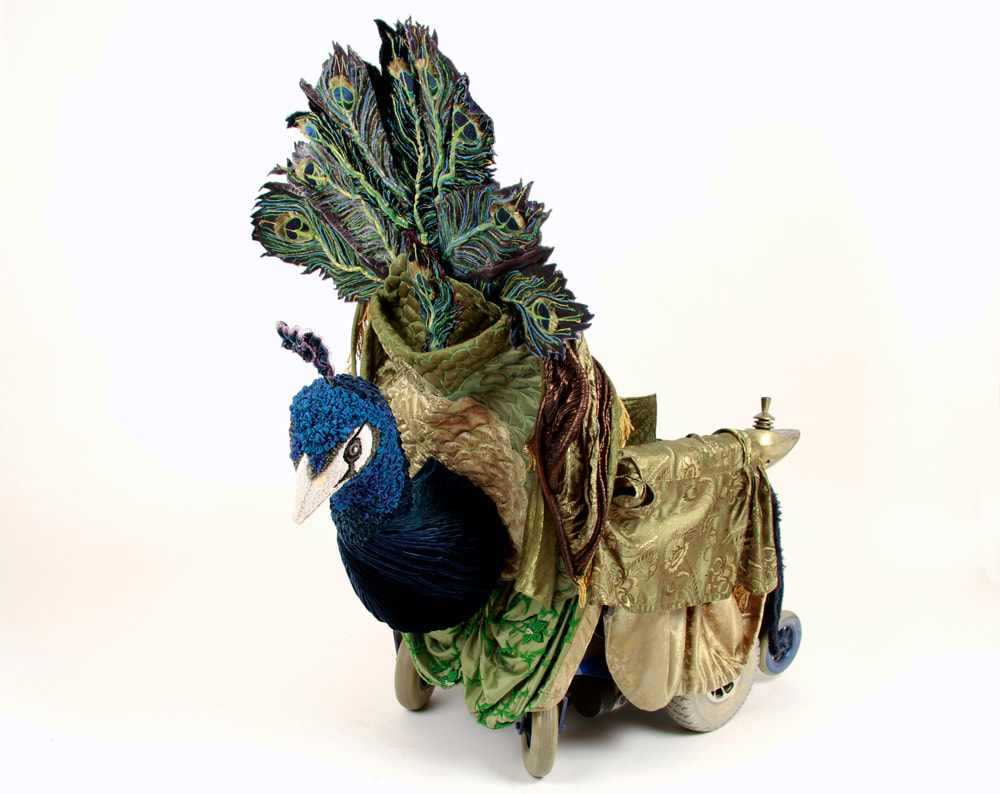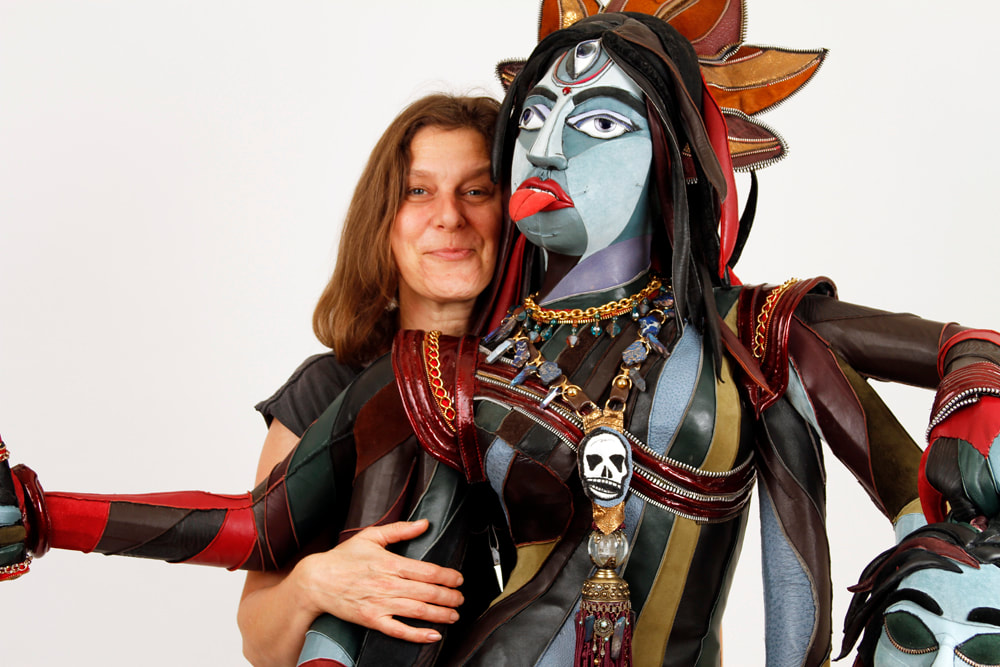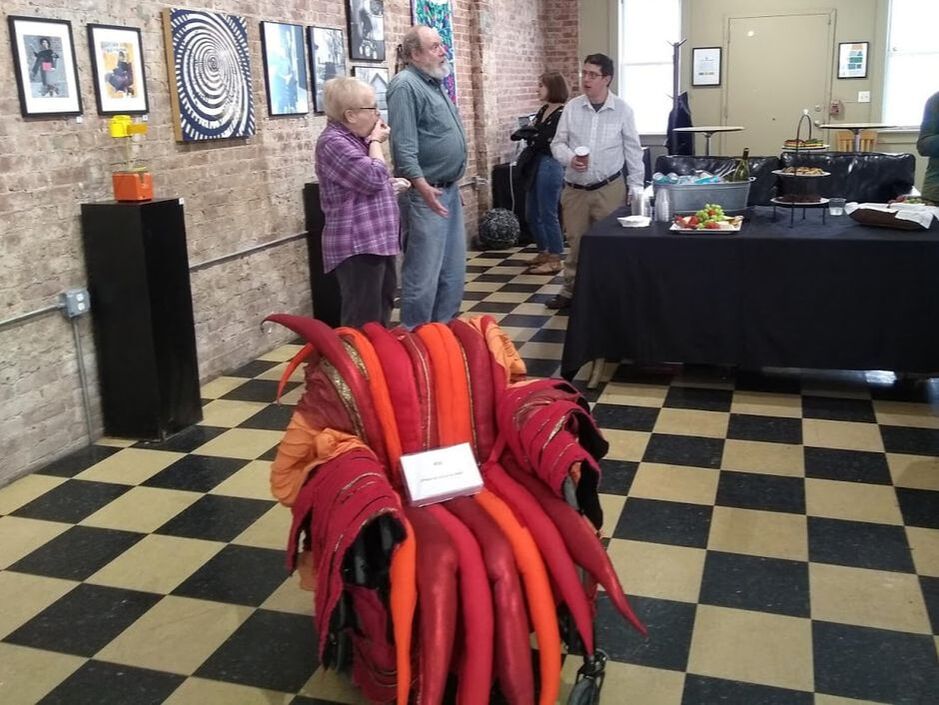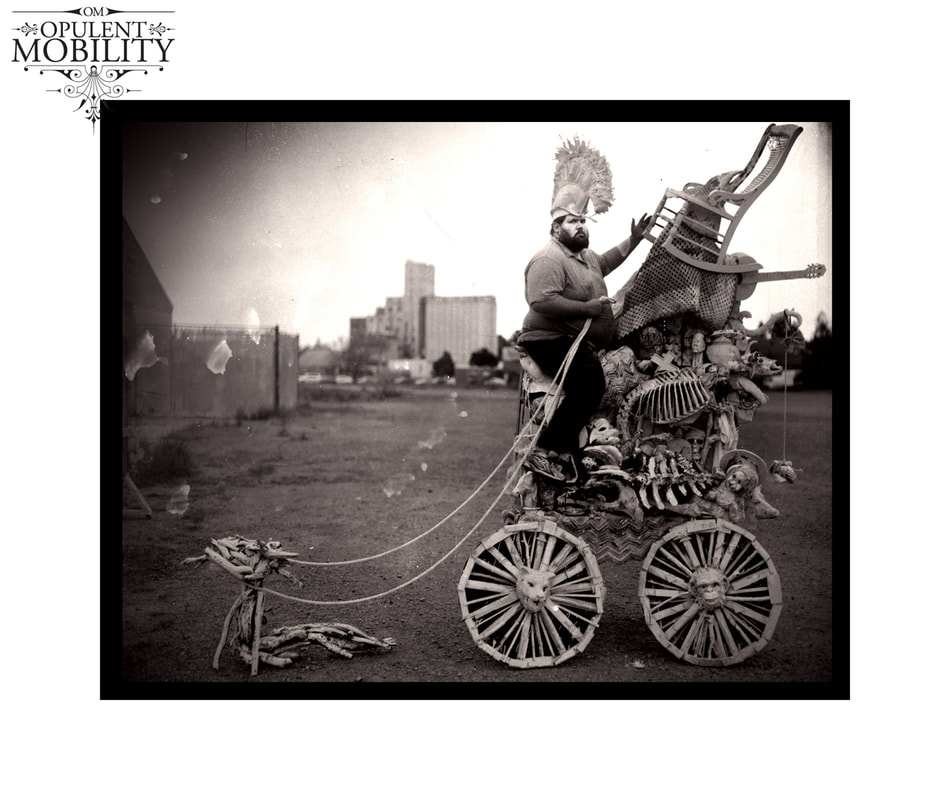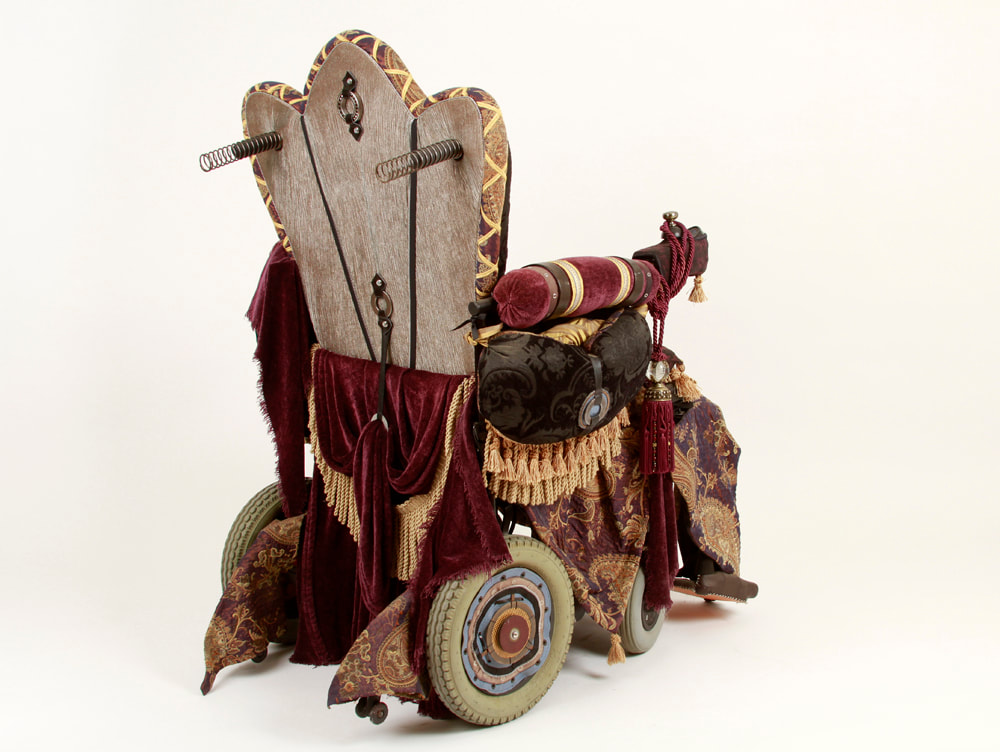Ms. Brody founded and curates Opulent Mobility.
These exhibits re-imagine Disability as opulent and powerful.
The Opulent Mobility 2024 call for art is now open! Please share your art that re-imagines disability as opulent and powerful. We challenge you to imagine a world where disability, mobility, and access are not merely functional, but opulent.
Get in touch with any questions.
Get in touch with any questions.
PRESS
|
|
|
|
how it began
My vision for Opulent Mobility is a world where disability is celebrated instead of denied, ignored, and feared.
This idea began after a former partner had a stroke at the age of 37. While bringing him to rehabilitation therapy, I met an 85 year old man and a 4 year old girl doing the same treatment for the same reason. It made it crystal clear that disability could happen at any time to anyone at any age. I was fascinated by the devices that helped them get around, but was shocked at their impersonal ugliness. With the help of a wheelchair-using friend, I turned an old Nutron R51 chair into an Edwardian throne (Driven) and Opulent Mobility was born.
After making my next piece (Le Flaneur) I struggled to find places to show my work. Many galleries are not wheelchair accessible. In spite of the good work of the ADA, a lot of places aren't access friendly. After discovering how hard it was to make my sculptures safe and functional, I did some research about wheelchair and walker designs. There are quite a few patents online for imaginative and innovative assistive technology devices, and almost none of those designs are available for sale on the market.
It was clear that this problem was larger than I thought. I decided to curate group exhibits dealing with the subject. Maybe I could find kindred spirits, fellow artists and people who could help me maneuver the tricky paths of medical licensing and make these fabulous devices a reality. At the very least it would get people talking about the subject. Along the way, I have been coming to grips with my own invisible disabilities.
Sharing this exhibit and these ideas is the best way I know to get that conversation started. After all, we have to be able to see the possibilities before we know we want them.
- A. Laura Brody
This idea began after a former partner had a stroke at the age of 37. While bringing him to rehabilitation therapy, I met an 85 year old man and a 4 year old girl doing the same treatment for the same reason. It made it crystal clear that disability could happen at any time to anyone at any age. I was fascinated by the devices that helped them get around, but was shocked at their impersonal ugliness. With the help of a wheelchair-using friend, I turned an old Nutron R51 chair into an Edwardian throne (Driven) and Opulent Mobility was born.
After making my next piece (Le Flaneur) I struggled to find places to show my work. Many galleries are not wheelchair accessible. In spite of the good work of the ADA, a lot of places aren't access friendly. After discovering how hard it was to make my sculptures safe and functional, I did some research about wheelchair and walker designs. There are quite a few patents online for imaginative and innovative assistive technology devices, and almost none of those designs are available for sale on the market.
It was clear that this problem was larger than I thought. I decided to curate group exhibits dealing with the subject. Maybe I could find kindred spirits, fellow artists and people who could help me maneuver the tricky paths of medical licensing and make these fabulous devices a reality. At the very least it would get people talking about the subject. Along the way, I have been coming to grips with my own invisible disabilities.
Sharing this exhibit and these ideas is the best way I know to get that conversation started. After all, we have to be able to see the possibilities before we know we want them.
- A. Laura Brody

Opulent Mobility by A. Laura Brody is licensed under a Creative Commons Attribution-ShareAlike 4.0 International License
Proudly powered by Weebly
